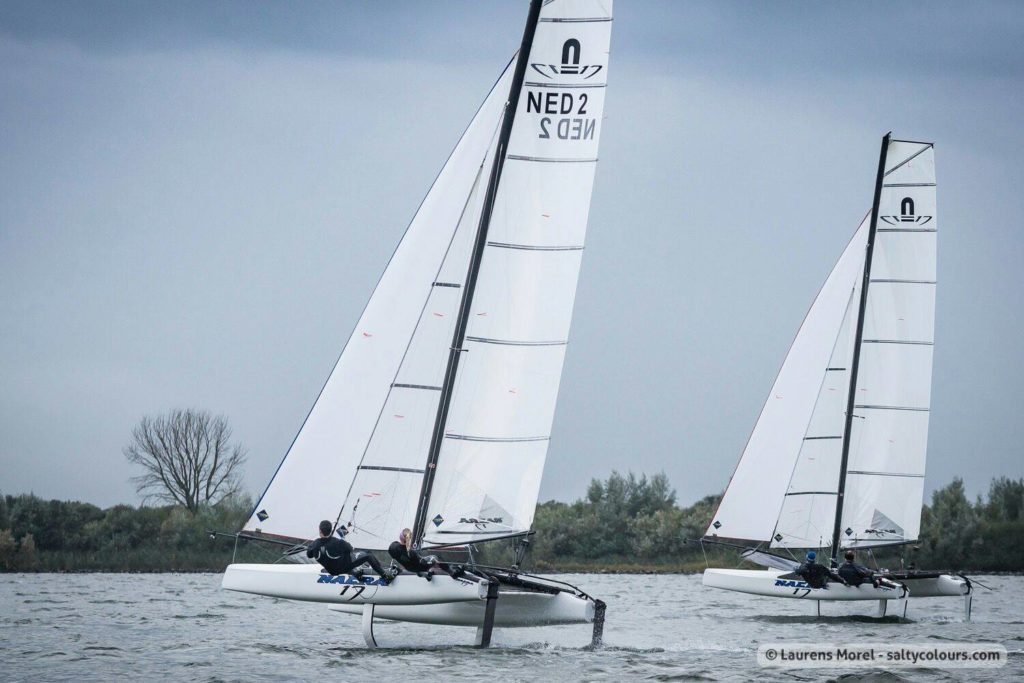
In a general membership meeting held by the Nacra 17 class, members voted 43 to 31 in favor of presenting a full-foiling design plan to World Sailing for recommendation for the 2020 Olympics in Tokyo, Japan.
The Nacra 17, which made its Olympic debut in Rio in August, had its share of growing pains over the last four years. According to Marcus Spillane, Nacra 17 Class President, there was a laundry list of challenges in manufacturing and quality control that lead to frustrations within the class.
The platform was developed specifically for the Olympics when World Sailing asked for proposals for a mixed-gender catamaran. The initial class association was run by Nacra Sailing International, a Dutch company based in The Hague. “That was the major challenge of the last four years,” says Spillane. “The class wasn’t a class before the Olympics, it was thrown right in there.”
“The way people were pushing the boats was above and beyond what was initially envisioned by the manufacturer,” says Bora Gulari, an avid foiler who sailed the Nacra 17 for Team USA in Rio with crew Louisa Chafee. “The combination of that with poor quality control and manufacturing was an issue.”
With four years to go until the next Games, the class now has an opportunity to organize, strategize and try to improve. These steps forward include this most recent decision on foiling.
“There is a new class executive, and we are working closely with World Sailing and with Nacra [Sailing International] to make sure that there is quality control in place,” says Spillane. “We’ve also had conferences with the designers, Morrelli & Melvin.”
“I think Nacra now will make a concerted effort in manufacturing improvements,” say Gulari. “With some oversight from the class and World Sailing, I think they will build a much better boat, and get to the point where the 49er class is now, as far as the high quality of the product.”
Following the vote, the class laid out three options for equipment going forward:
a) Retrofit a Mark1 boat to go full foiling for 7,900 euros. b) Buying a new platform for 14,500 euros, retaining the ability to sell the Mark 1 platform. c) Buying a new boat for 24,250 euros, an increase of about 2,000 euros from the Mark 1 price.
“I think the decision bodes well for the class,” says Gulari. “There will be secondhand boats for sale now that will open up the foiling market to a broader base. It’s trickle down technology that can make a big difference.” Gulari points out that the four-point foiling technology on the Nacra is easier and nicer to sail than three-point foilers, making the platform more accessible to newbies.
Before the foiling configuration is confirmed, the vote has to be approved by both World Sailing in November, and then the class must be confirmed as a chosen platform for the next Games by World Sailing in February of 2017.
“We do need a foiler [in the Olympics], and the way catamaran sailing has gone so far on foils, the Nacra is a logical step,” says Spillane. “It’s only appropriate to have at least one Olympic class that is representative of the forefront of what’s happening in the sailing world.”
For more, visit Nacra17Class.com (http://www.nacra17class.com/nacra-17-class-members-vote-recommend-full-foiling/)









